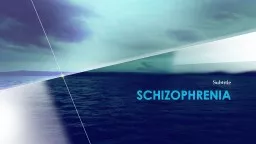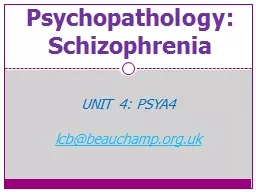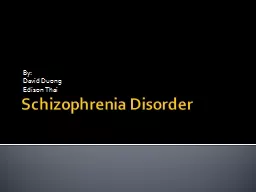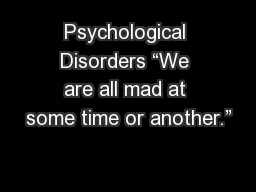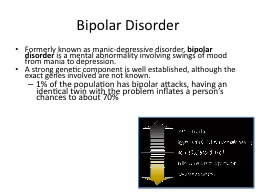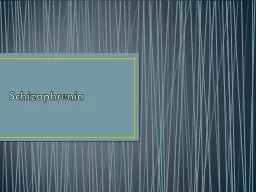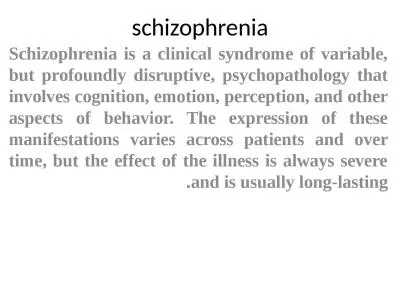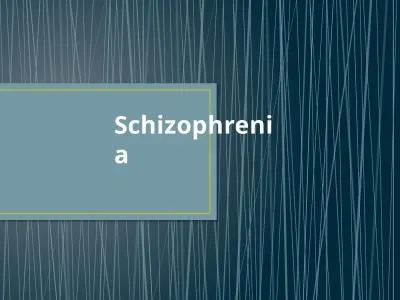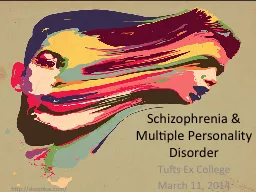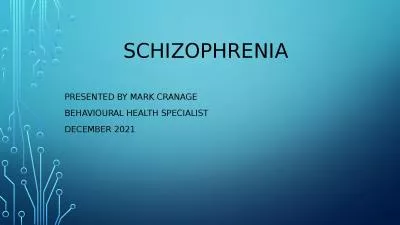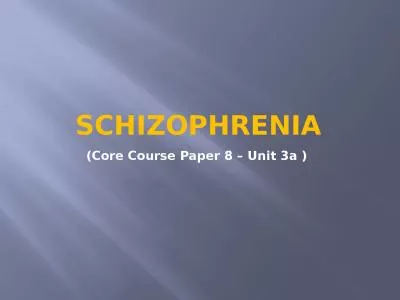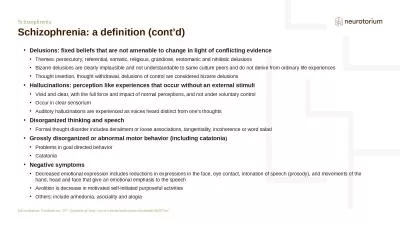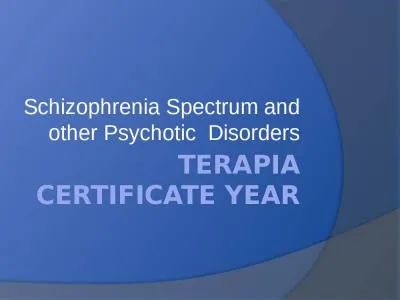PPT-Subtitle Schizophrenia A psychological disorder characterized by delusions, hallucinations,
Author : ellena-manuel | Published Date : 2018-03-18
Nearly 1 in 100 people 60 men 24 million across the world Schizophrenia Literally means splitmind Not a personality split but a split from reality A good example
Presentation Embed Code
Download Presentation
Download Presentation The PPT/PDF document "Subtitle Schizophrenia A psychological d..." is the property of its rightful owner. Permission is granted to download and print the materials on this website for personal, non-commercial use only, and to display it on your personal computer provided you do not modify the materials and that you retain all copyright notices contained in the materials. By downloading content from our website, you accept the terms of this agreement.
Subtitle Schizophrenia A psychological disorder characterized by delusions, hallucinations,: Transcript
Download Rules Of Document
"Subtitle Schizophrenia A psychological disorder characterized by delusions, hallucinations,"The content belongs to its owner. You may download and print it for personal use, without modification, and keep all copyright notices. By downloading, you agree to these terms.
Related Documents

